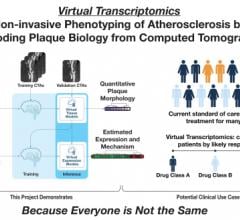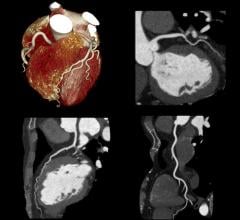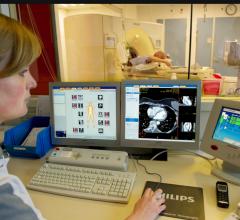
February 14, 2017 — The National Institute for Health and Care Excellence (NICE) in the United Kingdom recently issued guidance for use of the HeartFlow FFRct (fractional flow reserve computed tomography) Analysis to help determine the cause of stable chest pain in patients. Developed by HeartFlow Inc., the HeartFlow FFRct Analysis is the first non-invasive technology to provide insight into both the extent of coronary artery disease and the impact that disease has on blood flow to the heart, enabling clinicians to select an appropriate treatment.
NICE recommends the HeartFlow FFRct Analysis for patients with stable recent onset chest pain. Based on the evidence, it concluded the technology is safe, has a high level of diagnostic accuracy and may avoid the need for invasive coronary angiography. The committee further concluded that, when compared to all other tests, use of the HeartFlow FFRct Analysis could save the U.K. National Health Service approximately £214 per patient through avoiding unnecessary invasive tests and treatment.
The new guidance follows chest pain guidelines issued by NICE in November 2016, recommending non-invasive coronary CT angiography (cCTA) as the initial diagnostic test for patients with stable chest pain. NICE now recommends the HeartFlow FFRct Analysis as the most cost-effective option when additional information is needed by the clinician.
HeartFlow’s process starts with data from a standard, non-invasive cCTA. Leveraging deep learning, an advanced form of artificial intelligence, HeartFlow creates a personalized, 3-D model of each patient’s arteries. Powerful computer algorithms then solve millions of complex equations to simulate blood flow and assess the impact of blockages in the arteries. With this actionable information, physicians can determine the right course of action for each patient.
“The HeartFlow FFRct Analysis provides a definitive understanding of both the anatomical and functional findings, without any additional testing or risk for patients,” said Joseph Mills, M.D., Liverpool Heart and Chest Hospital. “Application of the Heartflow FFRct Analysis is likely to transform the quality of care we can provide for patients, ensuring the most accurate diagnosis and the best treatment plan, as well reducing the need for invasive coronary angiography – a procedure not without its risks.”
Read the article “Clinical Applications of FFR-CT.”
VIDEO: Early U.S. Experience With FFR-CT in Evaluating ED Chest Pain Presentation
Read the article “One-Year PLATFORM Trial Results Reinforce Benefits of FFR-CT.”


 March 07, 2024
March 07, 2024 








